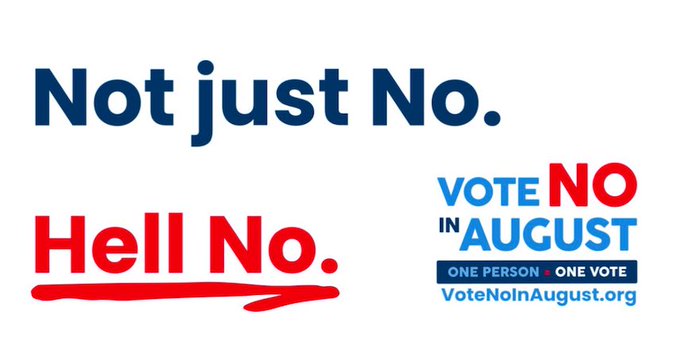
In a special election on August 8, Ohio voters will decide on Issue 1 to determine whether the threshold to pass citizen-proposed constitutional amendments should be raised from 50% plus one to 60%. That would basically end the 111-year-old right of Ohio voters to petition lawmakers at the ballot box.
In addition, the proposed amendment would require signatures from at least 5% of voters in the last gubernatorial election in all 88 counties. (Currently it requires 5% from 44 counties.) A “yes” vote on Issue 1 would approve the changes, while “no” would reject them.
State Rep. Brian Stewart, a chief proponent of the change, made it clear that the ballot measure is intended to block a citizen-led amendment to protect abortion access, which is aiming for the November ballot, according to The Columbus Dispatch. It’s currently polling at 58-59% in favor.
David Brock, chair of the Cuyahoga County Democratic Party, said at the recent Ward 7 Democratic Club meeting that Republicans are making it harder to vote, and refuse to raise the minimum wage or legalize marijuana. He suggested they could even ban birth control.
“What the Republicans are trying to do on August 8 is significant,” said Brock. “If passed, the floodgates will open.”
Cleveland Ward 7 executive precinct committeeman Mike Seals said Republicans have a supermajority in both chambers of the Ohio Legislature and are in the driver’s seat. “It is not just about abortion,” said Seals. “If the ballot measure passes, we are robbed of our choices and democracy.”
A coalition of organizations called Protect Choice Ohio, led by Ohio Physicians for Reproduction Rights (OPRR), is spearheading the effort to pass the constitutional amendment to guarantee reproductive rights in Ohio. The Right to Make Reproductive Decisions Including the Abortion Initiative is modeled after Reproductive Freedom for All measure that Michigan voters approved in 2022 by 55.5% of the vote. An anti-choice group called Protect Ohio Women is opposing the amendment.
One Person One Vote in Ohio, a nonpartisan coalition against Issue 1, sued to change the ballot language they call biased in the proposed amendment. The Republican-leaning Ohio Supreme Court granted part of their request to make the language more precise and accurate, although it still fails to include the current 50% requirement so voters understand that Issue 1 is making it harder to pass such a ballot issue.
Committeeman Seals was not surprised that Ohio Republicans have tried to push for a special election ahead of the November general election, saying it is part of their strategy to gain power and control with a preemptive strike.
“At the end of the day, the Republican agenda is to make it harder for democracy,” he added. “Issue 1 is not just about abortion rights. It is about controlling us.”
Ward 7 Councilwoman Stephanie Howse encouraged residents to engage in the process, with voter registration open until July 10, and early voting starting July 11 and ending on Sunday August 6.
“For over 100 years, citizens of Ohio had the opportunity to bring issues to the legislative and vote on them,” said Howse. “To change it now is very troubling. This is not off-brand with what Republicans have done in the past. They are consistent cheaters. They have been cheaters. It is the only way they have to know how to expand their powers.”
Growing up in Alabama, Mary Smith, a precinct leader in Ward 7, was taught civics in public school, where voting was part of education. The City of Cleveland, especially in her ward, has some of the lowest turnout numbers in the state, with less than 51% turnout compared to 74% in entire state in 2020. People do not know how to vote or register, she said.
“We are going to vote no matter what,” said Smith. “Growing up in the South, we realized the power in that pen. You can vote for whoever you want, but you will vote for somebody. We must teach our children to vote, tell it to our neighbors, and tell it to our grandchildren.”
Loss of community spirit has disillusioned Smith. She finds getting back to it hard but has not given up.
“I will bring my grandchildren to vote,” she said. “One house at a time, one child at a time, one neighbor at a time.”

Bruce Checefsky is a filmmaker and photographer, and published writer. He is the recipient of three Ohio Arts Council Individual Excellence Awards, a Creative Workforce Fellowship, and four CEC ArtsLink Fellowships.
2 Responses to “Why You Should Vote NO on Issue 1 on August 8 by Bruce Checefsky”
Isa R. Novak
When it comes to issue 1. I will be voting no
Jolyn
Stop the Steal. Vote NO on Issue 1